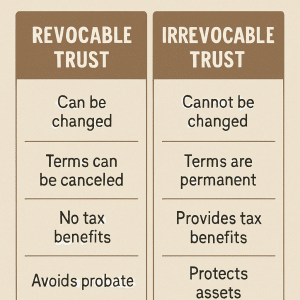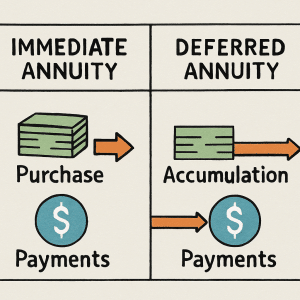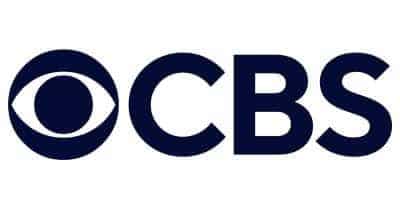Planning for a financially secure retirement is a common goal shared by many investors. A 403(b) plan (tax-sheltered annuity plan or TSA) is a retirement plan offered by public schools and certain charities and is similar to a 401(k) plan maintained by a for-profit entity.
Just as with a 401(k) plan, a 403(b) plan provides employees the opportunity to defer some of their salary and save for retirement while enjoying potential tax advantages.
This unbiased guide explains the various types of 403(b) plans, how they work, contribution and withdrawal rules, and finish with the pros and cons. Let’s dive in!
What is a 403(b) Tax-Sheltered Annuity?
A 403(b) tax-sheltered annuity plan is a specialized retirement savings option designed for employees of tax-exempt organizations, including schools, hospitals, and non-profit organizations. They provide employees the opportunity to save for retirement on a tax-deferred basis.
Similar to a 401(k), contributions to 403(b) tax-sheltered annuities are made with pre-tax dollars, and taxes on contributions and investment gains are deferred until withdrawal during retirement.

How Do 403(b) Plans Work?
An employee decides to participate in the tax-sheltered 403(b) plan their employer offers. The employee determines how much money they want to contribute to the plan. This contribution is deducted from their paycheck on a pre-tax basis, which reduces the employee’s taxable income for that year.
The money in the 403(b) plan grows tax-deferred, which means the employee doesn’t pay taxes on the contributions or any investment gains until they withdraw their money from the 403(b). The employee may choose how to invest the money in the 403(b) plan, depending on the investment options offered by your individual plan.
Common investment options include mutual funds, annuities, or other investment vehicles. When the employee reaches retirement age and starts withdrawing money from the 403(b) plan, they will pay income taxes on the withdrawals at their current tax rate.
Pros and Cons of a 403(b) Plan
Like any retirement savings plan, a 403(b) plan has its advantages and disadvantages. Here are some of the pros and cons to consider:
PROS
- Tax-deferred growth: Contributions and investment gains are tax-deferred, allowing employees to save more money on a tax-advantaged basis.
- Employer contributions: Many employers offer matching contributions to 403(b) plans, boosting employees' retirement savings.
- Additional catch-up contributions: Employees over 50 can make additional catch-up contributions to their 403(b) plan, accelerating their retirement savings.
- Investment options: 403(b) plans provide various investment options, enabling employees to customize their retirement savings strategy.
- Access to retirement savings: For employees of tax-exempt organizations, a 403(b) plan may be the primary retirement savings plan available, ensuring long-term financial security.
CONS
- Contribution limits: Annual contribution limits may restrict how much employees can save for retirement each year.
- Withdrawal restrictions: Withdrawals from a 403(b) plan may be subject to income taxes and penalties, discouraging early access to retirement savings.
- Limited investment options: Some 403(b) plans offer fewer investment options compared to other retirement savings plans, limiting customization.
- Administrative fees: 403(b) plans can and often do have administrative and other asset fees than can add up over the course of a your career.
403(b)Taxation and Withdrawal Rules
In addition to loans and hardship distributions, a 403(b) plan may allow employees to take money out of the plan when they:
- reach age 59½;
- have a severance from employment;
- become disabled;
- die; or
- encounter financial hardship.
Nevertheless, it’s important to note that early withdrawals (prior to age 59½) may incur a 10% penalty along with applicable taxes.
Required Minimum Distributions (RMDs)
Upon reaching the age of 73, it becomes mandatory to take the required minimum distributions (RMDs) from your tax-sheltered annuity account. The amount of RMDs is determined by your account balance and life expectancy, as assessed by the IRS.
Failing to adhere to RMD regulations can result in significant tax penalties, making it crucial to be aware of these requirements.
403(b) Plans vs. 401(k)
While both 403(b) plans and 401(k) plans serve as retirement savings vehicles, they possess distinct differences:
- Eligible Employers: 403(b) plans are specifically designed for employees of tax-exempt organizations such as schools, hospitals, and non-profit organizations, whereas 401(k) plans cater to employees of for-profit companies.
- Contribution Limits: Both plans have annual contribution limits, with 403(b) plans potentially having slightly higher limits in certain cases. For instance, employees over 50 may be eligible for additional catch-up contributions in both plans, but the catch-up contribution limit is higher for 403(b) plans.
- Investment Options: While both plans may offer various investment options, 403(b) plans often have more limited choices compared to 401(k) plans. For example, 403(b) plans might primarily offer annuities, while 401(k) plans provide a broader array of investment options, including mutual funds, stocks, and bonds.
- Employer Contributions: Both plans can offer employer-matching contributions, but the amount and structure of these contributions may differ between them.
- Withdrawal Rules: The rules governing withdrawals from 403(b) plans and 401(k) plans can vary, with 403(b) plans generally being more restrictive. For instance, certain 403(b) plans may require employees to wait until age 59 1/2 before making withdrawals, whereas 401(k) plans may allow withdrawals as early as age 55.
Types of 403(b) Plans
Employers have the flexibility to provide their employees with various types of 403(b) plans. Here are some of the most frequently encountered variations:
Conventional 403(b) plan: The conventional 403(b) plan is the most prevalent option available. It permits employees to contribute funds on a pre-tax basis, allowing them to defer taxes on any investment gains until they decide to withdraw the money during retirement.
Roth 403(b) plan: The Roth 403(b) plan allows employees to make contributions with after-tax dollars. Contributions are made using post-tax income, and any investment gains within the plan are tax-free. Qualified withdrawals made during retirement are also tax-free.
Combination 403(b) plan: Some employers may offer a combination 403(b) plan, which grants employees the opportunity to make both pre-tax and after-tax contributions to the plan. This type of plan provides a certain level of flexibility in terms of contribution options.
Non-ERISA 403(b) plan: Certain tax-exempt organizations, such as churches and religious organizations, may offer a non-ERISA 403(b) plan. This type of plan is not subject to the same federal regulations as traditional 403(b) plans. The specific rules and guidelines governing this plan may vary based on the organization offering it.
Individual 403(b) plan: Designed specifically for self-employed individuals who work for tax-exempt organizations, the individual 403(b) plan enables these individuals to contribute to a retirement savings account on a tax-deferred basis. This plan caters to the unique circumstances of self-employed workers within tax-exempt entities.
Remember, the availability of these 403(b) plan variations may vary depending on the employer and their specific policies.
403(b) Plan Contribution Limits 2023
The limit on elective salary deferrals – the most an employee can contribute to a 403(b) account out of salary – is $22,500 in 2023 ($20,500 in 2022; $19,500 in 2020 and 2021).
Employees who are age 50 or over at the end of the calendar year can also make catch-up contributions of $7,500 in 2023 ($6,500 in 2022, 2020, and 2021; $6,000 in 2015 – 2019) beyond the basic limit on elective deferrals.
IMPORTANT NOTE:
This general limit is reduced by the amount of elective deferrals an employee makes to:
- 401(k) plans;
- SIMPLE IRA plans;
- Salary Reduction Simplified Employee Pension (SARSEP) plans;
- other 403(b) plans; and
- Code Section 501(c)(18) plans.
How Does a 403(b) Plan Work After You Retire?
403(b) plans are funded with pre-tax dollars and your money grows tax-deferred which means you won’t have to pay taxes now. However, you will pay taxes when you begin to take withdrawals after you retire.
You can roll over your 403(b) plan into an annuity without any tax consequences. Ultimately you will still pay income taxes once you begin taking withdrawals; however, an annuity may be a better option if you wish to turn your 403(b) plan into a lifetime income stream.
Request an Annuity Quote
Complete the form below and we’ll email your annuity quote within four business hours. For more immediate assistance you can reach us at 855-583-1104, or use our annuity rates calculator.













